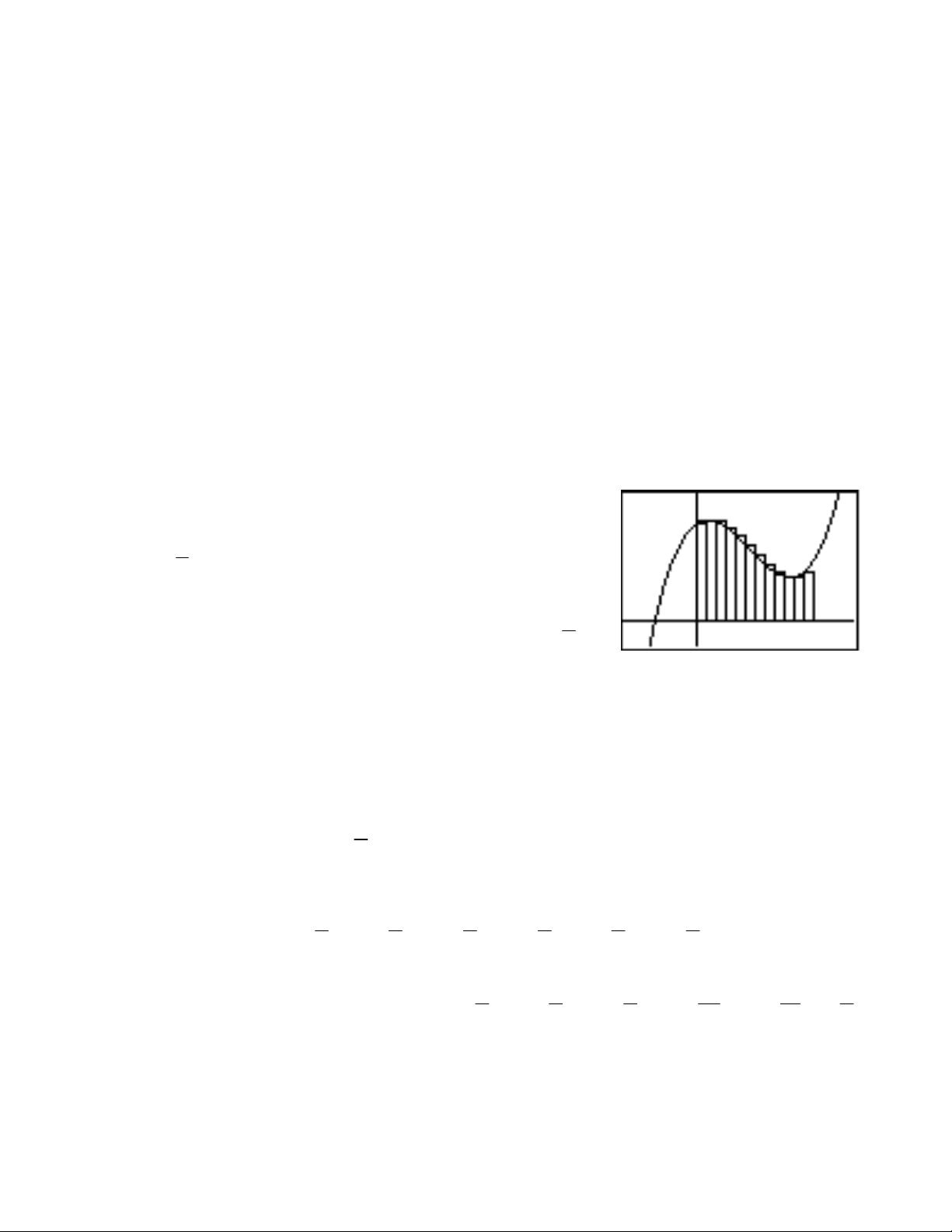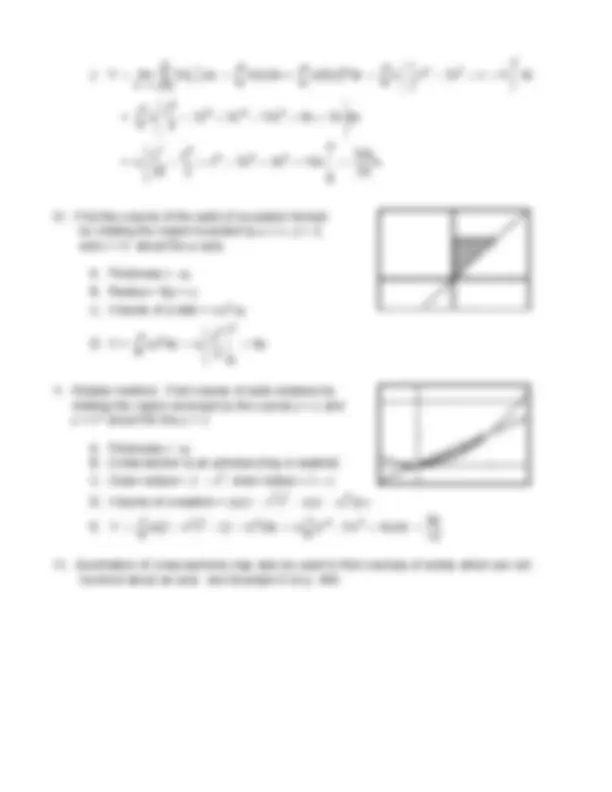



Study with the several resources on Docsity

Earn points by helping other students or get them with a premium plan


Prepare for your exams
Study with the several resources on Docsity

Earn points to download
Earn points by helping other students or get them with a premium plan
Community
Ask the community for help and clear up your study doubts
Discover the best universities in your country according to Docsity users
Free resources
Download our free guides on studying techniques, anxiety management strategies, and thesis advice from Docsity tutors
How to find the volume of solids of revolution by integrating the cross-sectional area with respect to the variable of revolution. The disk method and the washer method, with examples using the definite integral and riemann sum. The document also mentions the summation of cross-sections as an alternative method.
Typology: Study notes
1 / 2

This page cannot be seen from the preview
Don't miss anything!


6.2 Volumes
Objective: Find volume of solids of revolution
I. Definition of volume
A. S is a solid which lies between x = a and x = b
B. Cross-sectional area of S in plane P (^) x , through x and perpendicular to x-axis is A(x)
C. A is a continuous function
n
V lim A(x ) x A(x)dx → ∞ =
II. A solid of revolution is formed by revolving a region in a plane about a line in the plane,
called the axis of revolution.
III. Disk method : Find the volume of the solid of
revolution generated by revolving the region formed
by x = 0, x = 3, and the
y x 2x x 4, 2
x-axis about the x–axis.
A. Consider a regular partition on [0, 3] with
x 4
B. Rotate area about x–axis
C. Each rectangle generates a circular disk
D. Volume of a disk =
2 π r h
E. Radius of a disk = f (x)
F. Height (thickness) of a disk = ∆x
G. Volume of a disk = (thickness)
2 π (radius)
H. Volume of a disk =
2 (^1 3 ) x 2x x 4 x 2
π
2 2 2 2 2 2 2 L
V f(0) f f f f f f 4 4 4 4 4 4
π
2 2 2 2 2 7 8 9 10 11 1 f f f f f 4 4 4 4 4 4
V L ≈ 28.35 π , VR ≈ 25.91 , π VM ≈ 27.10 π
n
V lim A(x ) x A(x)dx → ∞ =
2 b (^2 33 )
a 0
[f(x)] dx x 2x x 4 dx 2
π π
6 3 5 4 2
0
x 2x 5x 15x 8x 16 dx 4
π
3 7 6 5 3 2
0
x x 759 x 5x 4x 16x 28 3 28
π π
IV. Find the volume of the solid of revolution formed
by rotating the region bounded by y = x, y = 3,
and x = 0 about the y–axis.
A. Thickness = ∆y
B. Radius = f(y) = y
C. Volume of a disk =
2 π y ∆y
3 3 (^3 )
0 0
y y dy 9 3
π π π
V. Washer method: Find volume of solid obtained by
rotating the region enclosed by the curves y = x and
y = x
2 about the line y = 2
A. Thickness = ∆x
B. Cross-section is an annulus [ring or washer]
C. Outer radius = inner radius = 2 – x
2 2 −x ;
D. Volume of a washer =
2 2 2 [ π (2 − x ) − π (2 − x) ]∆ x
(^1) 2 2 2 1 4 2
0 0
V [(2 x ) (2 x) ]dx (x 5x 4x)dx 15
π = π − − − = π − + =
VI. Summation of cross-sections may also be used to find volumes of solids which are not
revolved about an axis: see Example 6 on p. 460